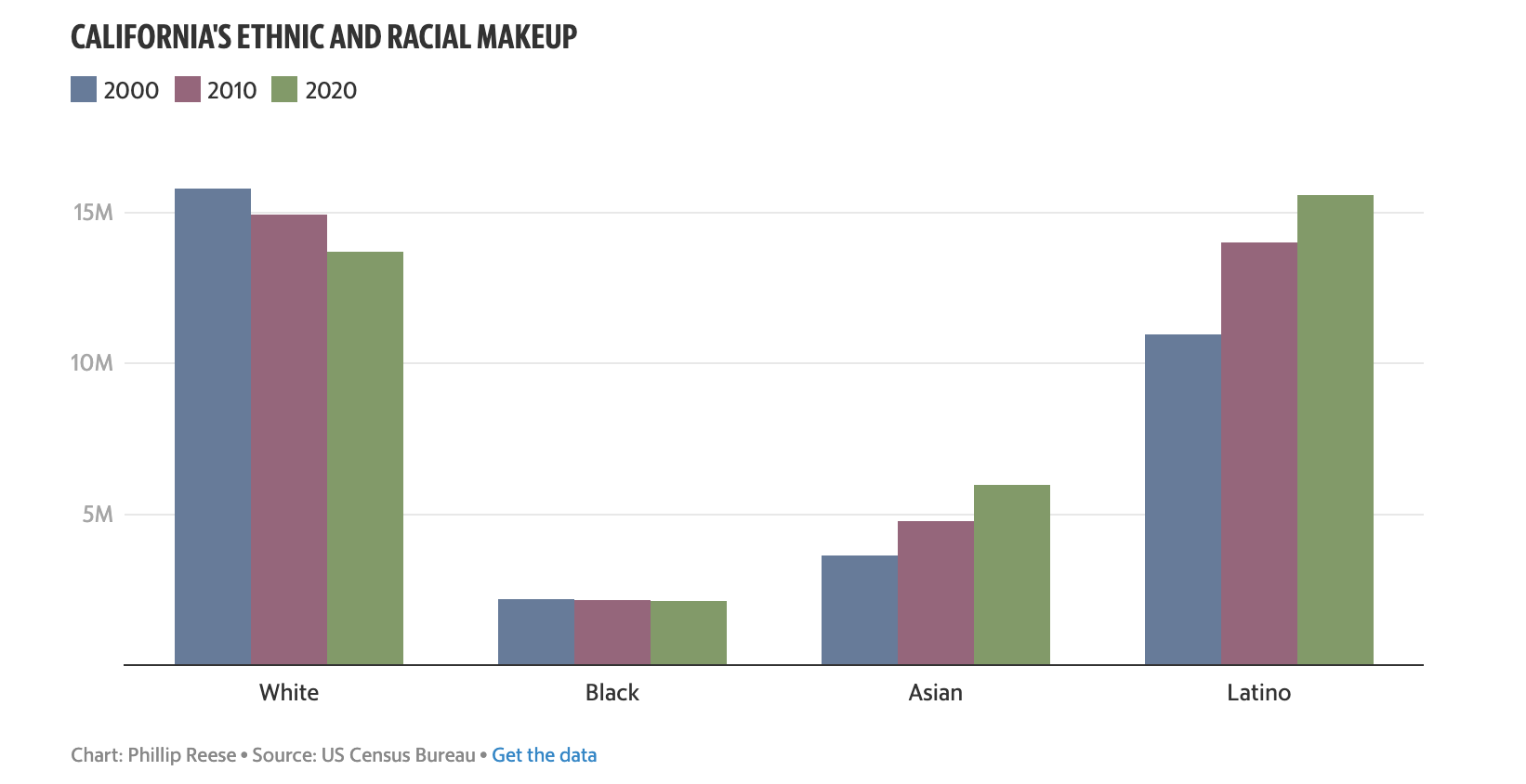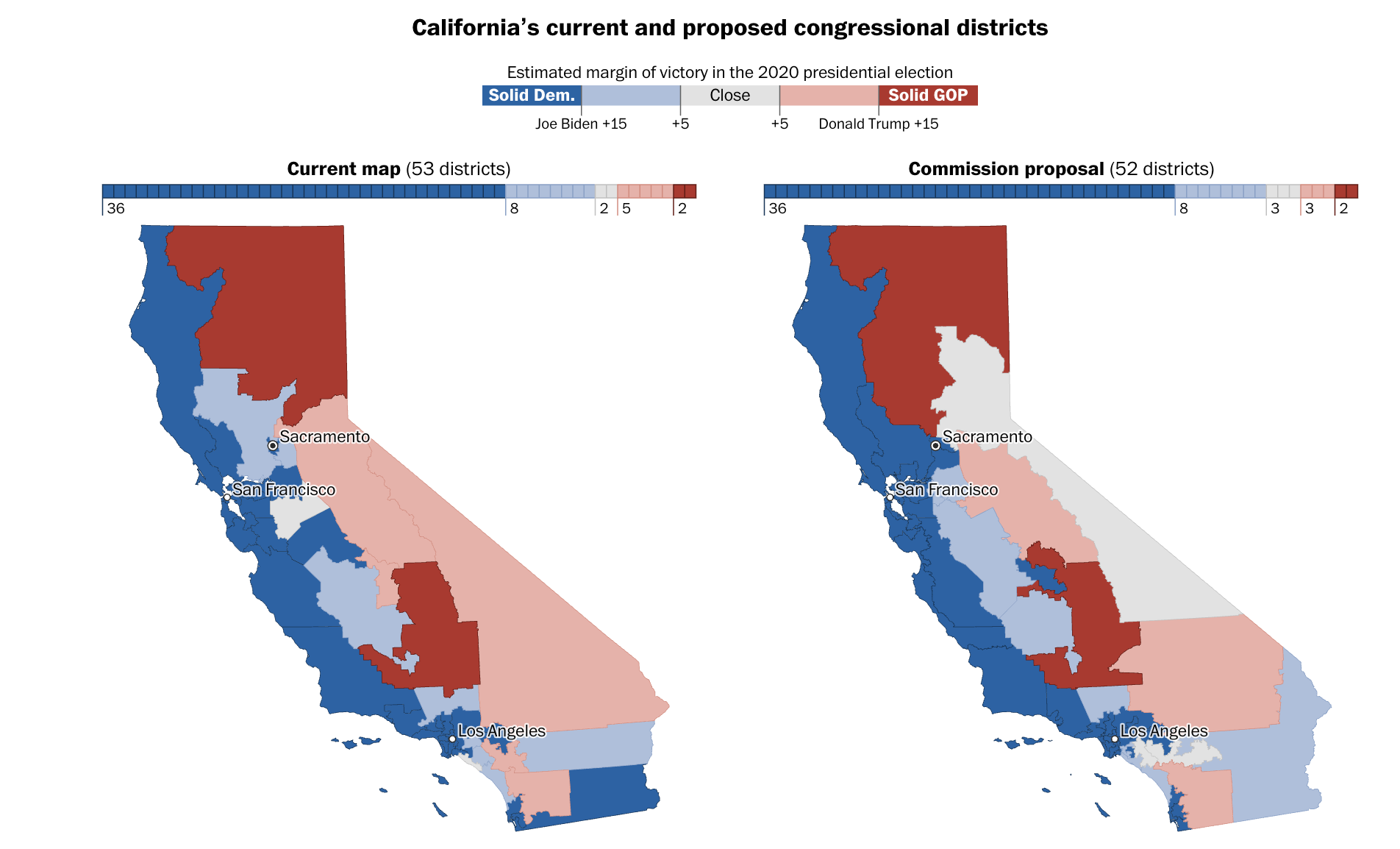The Sacramento Bee reporters Gillian Brassil, Jeong Park, Andrea Briseño coverage on the new Congressional redistricting maps and their impact on Latino, Asian, and Black communities. This article features an interview with Nancy Yap, CAUSE’s Executive Director.
"搶救成功 洛杉磯選區重劃亞裔利益保住" (World Journal)
CALIFORNIA CITIZENS REDISTRICTING COMMISSION APPROVES FINAL MAPS
WEDNESDAY, DECEMBER 22, 2021 -- LOS ANGELES, CA -- During the late evening hours of Monday, December 20, 2021, the Commission voted to approve the final Congressional, Senate, and Assembly maps, which can be viewed here. This marks one of the last steps of the redistricting process as the Commission is required to post these maps for 3 days before they will be final. By law, maps need to be certified by December 27, 2021, so they are unlikely to change. Once finalized, these maps will play a major role in the future of our communities and California politics for the next decade.
"Latinos and Democrats benefit from new California congressional map" (The Washington Post)
After Outcry, Asian-Majority Cities In West San Gabriel Valley Are Now Back Together In Latest Redistricting Map
Protecting the Voting Rights of the San Gabriel Valley’s Asian American Community
The San Gabriel Valley's Asian-Majority Cities Would Be Split Up Under This Redistricting Plan
A proposal before the state redistricting commission would redraw two congressional districts currently represented by Judy Chu and Young Kim. Critics say..
JOINT STATEMENT OF SAN GABRIEL VALLEY LEADERS ON THE DILUTION OF THE AAPI COMMUNITY IN DRAFT REDISTRICTING MAPS
TUESDAY, NOVEMBER 16, 2021 -- LOS ANGELES, CA -- A coalition of Asian American Pacific Islander (AAPI) community leaders and organizations are joining together to raise concerns over California Citizens Redistricting Commission’s draft maps of the San Gabriel Valley (SGV). The draft maps split West San Gabriel Valley cities (WSGV) and East San Gabriel Valley (ESGV) cities with significant AAPI populations into multiple congressional districts. In these drafted commission maps, the AAPI community would face an uphill battle to elect a representative from their own community and reverse four decades of progress by community coalitions and partnerships.
"The San Gabriel Valley's Asian-Majority Cities Would Be Split Up Under This Redistricting Plan" (LAist)
"AAPI group warns against California’s plan to redistrict San Gabriel Valley, splitting of Asian vote" (NextShark)
"選區重劃 聖谷亞裔官員:嚴重割裂亞太裔選票" (World Journal)
"選區重畫影響聖谷亞裔權益 不利趙美心、金映玉" (World Journal)
"亞裔組織盼民眾及時向選區重畫委員會發聲挽回" (World Journal)
RPV Analysis and Asian-American Voting in the San Gabriel Valley: CA-27
RPV Analysis and Asian-American Voting
in the San Gabriel Valley: CA-27
By Dr. Christian R. Grose and Dr. Natalie Masuoka
Executive Summary
CA-27 is an Asian-American-ability-to-elect district where Asian-American voters cohesively support Asian-American candidates of choice. Asian-American voters cohesively support Asian candidates of choice in CA-27. Support for Asian-American candidates of choice exists across most, though not all, Asian national origin groups in the San Gabriel Valley and in CA-27. On balance, Asian-American voters – and specific national origin groups such as Chinese-Americans – are cohesive in support for Asian-American candidates in CA-27. On the other hand, there are two national origin groups – Indian-Americans and Vietnamese-Americans – who show some evidence of lack of cohesion with other Asian-American voters in support of Asian candidates of choice in CA-27.
There is evidence of racial polarization between Asian-American voters and non-Hispanic white voters in CA-27 and in the San Gabriel Valley. We looked at congressional elections and statewide elections featuring Asian-American candidates in CA-27. In these elections within CA-27, Asian-American voters often vote in contrast to non-Hispanic white voters. Slight majorities of non-Hispanic white voters often vote against the Asian-American candidate of choice supported by Asian-American voters.
CA-27 is in the San Gabriel Valley, which is east of the city of Los Angeles in southern California. This region is mostly in the eastern part of Los Angeles County. The San Gabriel Valley is home to significant Asian-American communities and Latino communities. CA-27 is the second largest percent-Asian district in California and the largest in southern California (39% Asian-American population, 2020 census; 35% Asian-American citizen-voting age population).
RPV Analysis of CA-27 U.S. House Elections
The CA-27 district primarily includes voters in the San Gabriel Valley, but geographically includes a very rural section of Los Angeles County, including the Angeles National Forest in the northern part of the district. Most of CA-27’s population lies west and east of neighboring district CA-32. The district is currently represented by an Asian-American Democrat.
To assess if racially polarized voting is present in CA-27, we examine general election contests in 2018 and 2020 for U.S. House. In 2020, the Democrat was the incumbent up for reelection against a Republican challenger Republican. The final vote for the district in 2020 was in favor of the incumbent, 69.8% to 30.2%. In 2018, the same incumbent up for reelection against a Democratic challenger. Again, the sitting congresswoman won reelection, 79.2%, to 20.8%.
Cohesive Asian-American Support for the Asian-American Candidate of Choice in CA-27
Tables 1 and 2 below show the results of racially polarized voting analyses in CA-27, and reveal that the incumbent was the candidate of choice of Asian-American voters in both 2018 and 2020. The analyses also show that the majority of all major racial and ethnic groups in the district favored the Asian- American candidate of choice in 2018, but not in 2020.
There is cohesive and large support from Asian-American voters and Latino voters for the congresswoman. Table 1 shows that in 2018, she received 84% of the Asian-American vote and 84% of the Latino vote. The non-Hispanic white vote was more split, with just 52% of non-Hispanic white voters voting for the incumbent in 2018. Since all three groups favored her, this implies there is not racial polarization. On the other hand, there is a very wide gap between support for the congresswoman by Asian-American voters and Latino voters; and almost half of non-Hispanic white voters preferred the challenger. This suggests some level of polarization does seem to exist between white voters and Asian-American voters in CA-27.
Table 2 shows RPV analyses for CA-27 in the 2020 U.S. House election. In this election, a slight majority of non-Hispanic white voters supported the white challenger over the Asian candidate of choice. Latino voters voted in coalition with Asian-American voters wo support the incumbent at very high levels (81%). Table 2 suggests there is racial polarization in CA-27, which means that there is a need to draw an Asian-American-ability-to-elect district in the San Gabriel Valley in the 2022 redistricting process. Because Asian-American voters are cohesive and voting in opposition sometimes to non-Hispanic white voters, there is a need for an Asian-American ability-to-elect district
RPV Analyses for Asian-American Candidates of Choice in CA-27 in Statewide Elections
In addition to the U.S. House elections, we also estimated RPV in two statewide elections that featured Asian-American candidates of choice: State Treasurer and State Controller in 2018. We estimate support for these two candidates by looking only at voters within CA-27 for additional evidence. These RPV analyses are in Table 3 and Table 4.
Asian-American voters in CA-27 are cohesive in their support for Asian-American candidates of choice for Ma (73%) and Yee (77%). Latino voters also cohesively supported the Asian-American candidates of choice at very high levels. Non-Hispanic white voters, as similarly observed in recent U.S. House elections, split their vote between the Asian candidates of choice and the opposing white candidates. A slight majority of non-Hispanic white voters voted in opposition to the Asian-American candidates of choice. Given this RPV, there is a need for an Asian-ability-to-elect district in the area of CA-27.









